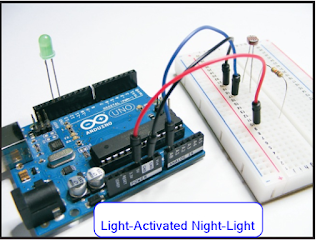The relationship between Arduino and Artificial Intelligence (AI) has become increasingly important as smart embedded systems become more common. Here's how they relate:
🔌 1. Arduino as a Data Collector for AI
Arduino boards (like Uno, Nano, or ESP32) are often used to gather real-world data from sensors:
-
Examples:
-
Temperature, humidity, or gas sensors
-
Light, motion, and distance sensors
-
Audio and image (via external modules)
-
🧠 The data collected can then be:
-
Sent to a more powerful system (e.g., Raspberry Pi, PC, or cloud) to be processed with AI models.
-
Used to train models for later use or make real-time decisions.
🤖 2. Arduino Running Lightweight AI Models
Some optimized or quantized AI models can be deployed directly on microcontrollers:
-
Platforms and Tools:
-
TinyML (Tiny Machine Learning) → Run ML models on microcontrollers
-
TensorFlow Lite for Microcontrollers (TFLM)
-
Edge Impulse → Cloud-based tool to train and deploy models on microcontrollers
-
-
Examples:
-
Voice command recognition ("yes", "no")
-
Gesture recognition with accelerometers
-
Anomaly detection in machines
-
📍Boards that support AI better:
-
Arduino Nano 33 BLE Sense
-
ESP32 (with enough RAM and processing speed)
🌐 3. Arduino as an Interface for AI Systems
Arduino can also be the “actuator” or interface for an AI system running elsewhere:
-
AI runs on a PC/cloud and sends commands to Arduino to control:
-
Motors (robot arms)
-
Lights, buzzers, displays
-
Home automation (IoT)
-
💡 Example Projects
-
Smart fan that turns on/off based on temperature + voice commands
-
Plant watering system using moisture sensors + predictive models
-
Facial recognition system where Arduino controls access based on camera + AI model results

%20-%20Recherche%20Go.png)






























